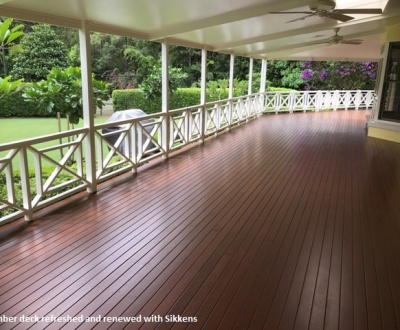Loved for their warm feel and elegant aesthetic, timber floors remain a popular choice with Australian homeowners. However, as a natural material, timber floors are prone to wear and tear over time and that sometimes includes timber cupping.
In this guide to timber cupping, peaking and crowning issues, we’ll explain what timber cupping is, how to prevent it, and what to do if your floor is affected.
What are timber cupping, peaking and crowning?
Timber cupping, peaking and crowning all refer to changes in the curvature of the timber board’s surface. Specifically:
- • Both timber cupping and peaking refer to a situation where the timber board’s edges are higher than the middle of the timber board.
- • Timber crowning refers to a situation where the timber board’s edges are lower than the middle of the timber board.
What causes timber cupping?
Like other timber products, timber floors expand and contract with changes in humidity. In more humid conditions, timber absorbs moisture and expands, while in drier conditions timber releases moisture into the air and contracts. This explains why gaps may appear between timber boards during dry times and close over when it is more humid.
Timber cupping is caused by changes in the timber boards’ moisture content. Specifically, timber cupping occurs when there is a moisture imbalance between the upper and lower surfaces of the floorboards. When there is more moisture in the bottom of the board than the top, the lower section of the board expands more than the top causing the edges to rise.
Whether the timber cupping is the result of too much moisture on the lower surface or too little moisture on the upper surface can be identified by examining the timber board’s edges. If cupping is occurring and the edges are tight, moisture absorption from the lower surface is most likely to blame. Conversely, if cupping is occurring and there is a gap at the edges of the timber boards, dry conditions on the upper surface are typically the problem.
To confirm the source of the problem, a timber flooring expert can use a resistance moisture meter to perform a moisture gradient test. This test measures the moisture level at the top, centre and bottom of the floorboards to determine whether there is a difference in these readings.
What causes timber crowning?
Timber crowning is the opposite of timber cupping, but is also caused by a difference in moisture content between the upper and lower layers of the board. With timber crowning, however, excess moisture in the top surface of the floorboard is to blame.
What causes timber peaking?
Timber peaking has the same appearance as cupping but is not caused by moisture levels. Rather, timber peaking is caused by expansion pressure in the floorboards. This occurs when the floorboards expand after they have been installed and the pressure from the expansion accumulates on the top and shoulders of the boards. There are several causes of timber peaking, including:
- • The timber boards being undercut, which is where the top of the board is wider than the bottom.
- • Poorly applied adhesives prevent the bottom of the board from expanding, causing the top to be wider than the bottom.
- • Poor installation of the floorboards during dry weather where expansion in more humid weather isn’t accounted for.
How to prevent and treat timber cupping, peaking and crowning
Most instances of timber cupping, peaking and crowning are relatively mild and can resolve by themselves, however, there are a few ways to prevent this from happening in the first place. These include:
- • Ensuring your floorboards are properly installed and sealed to prevent moisture from seeping into the boards.
- • Maintaining a relatively constant humidity level inside the house, particularly while the timber flooring is being installed.
- • Investigating the sources of any water seepage, and promptly addressing these to prevent excess moisture from being absorbed by the boards.
This is author biographical info, that can be used to tell more about you, your iterests, background and experience. You can change it on Admin > Users > Your Profile > Biographical Info page."
Request a free quote
Talk to us today and discuss your floor restoration, repairing your deck and new flooring.
Recent Posts
- What Are the Different Types Of Timber Floor Finishes? An Expert Guide September 10, 2024
- Spotted gum deck, sanded and coated with Intergrain Ultradeck August 27, 2024
- Understanding Timber Flooring: Colour Changes and Stains August 21, 2024








